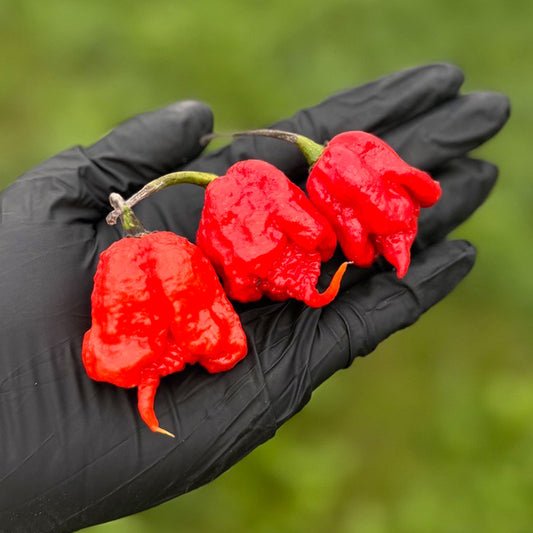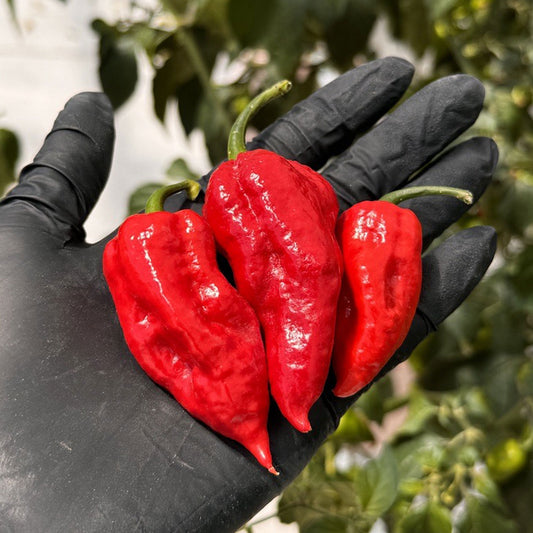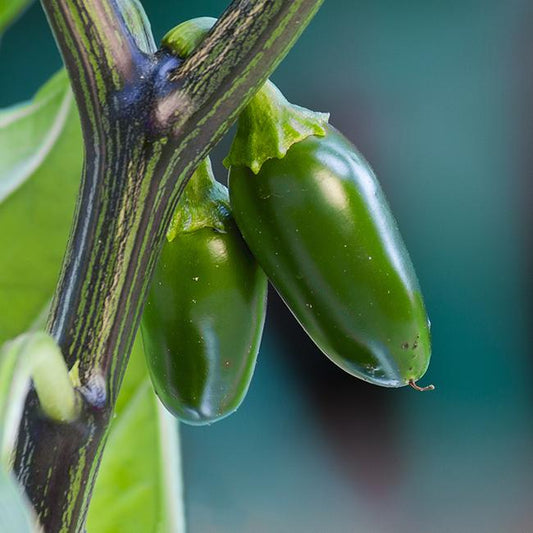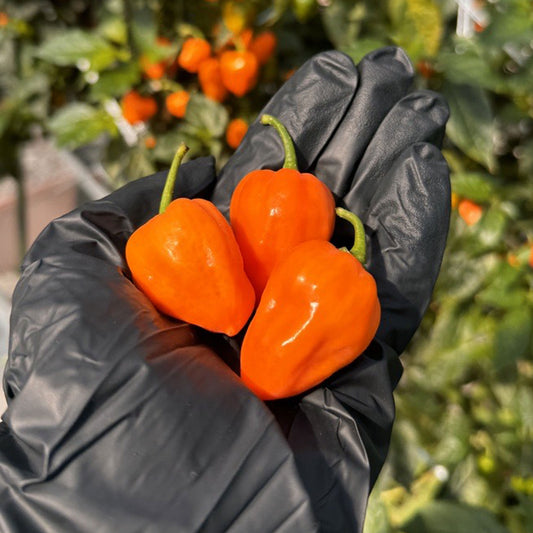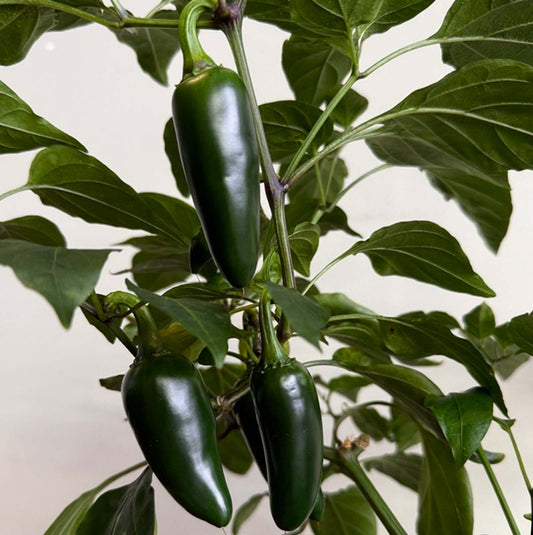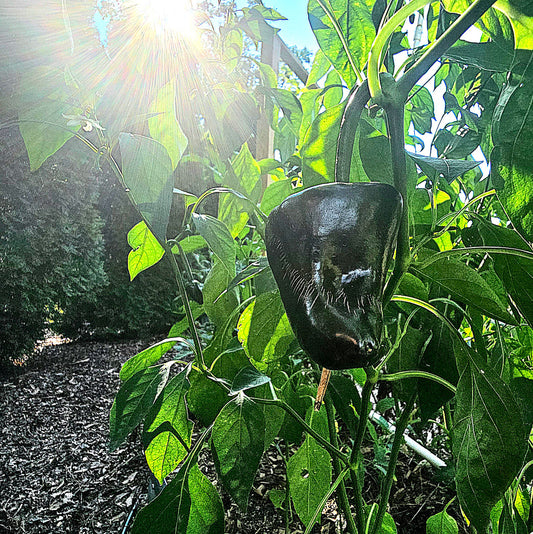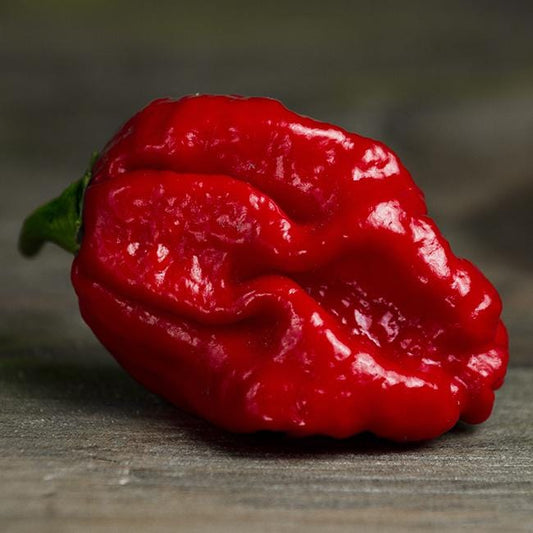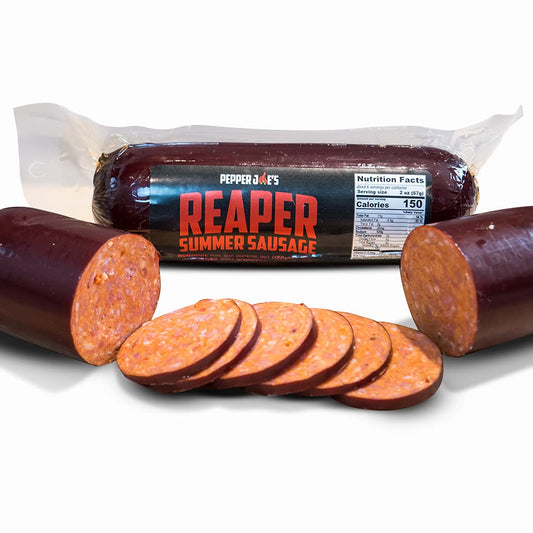How to Plant & Grow Peppers - General Gardening Tips
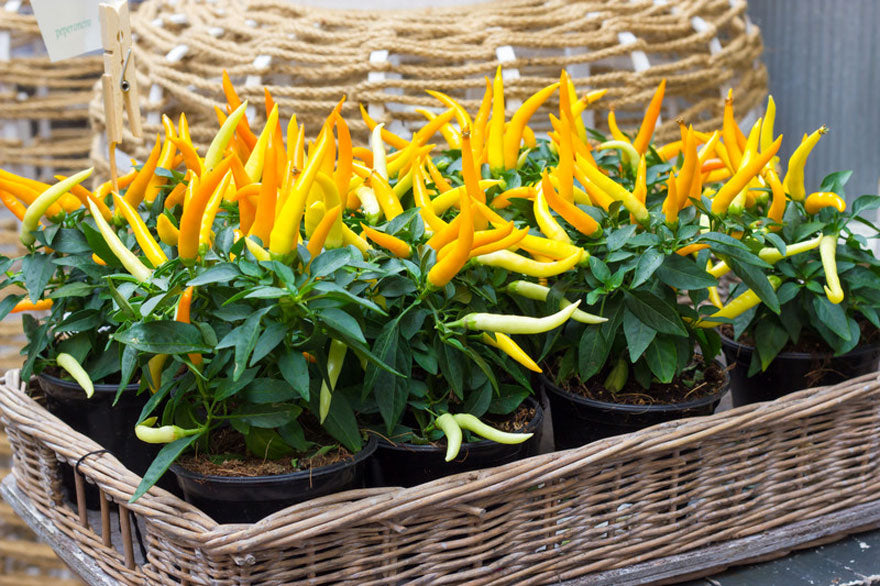
Tried & True
Most of my varieties have been grown for decades. I save the seeds from only the biggest, best and ripest specimens. I hand pick (not by machine) and extract these seeds myself. I proudly pass this quality on to you.
Soil and Tray Method:
Some seed varieties can be finicky to germinate. I recommend soaking seeds overnight in warm water to give them a head start. I am a 100% organic gardener, but of course there is many people are not. Some of them soak the seeds overnight in Saltpeter (potassium nitrate). (When sowing outdoors, the Saltpeter actually simulates the digestive tract of birds that eat wild hot peppers, therefore accelerating germination.)
Soil: There are many good seed starting mixes available at nurseries or discount stores. They work very well and I would recommend them as there is no mixing, measuring, etc. If you prefer to make your own mixture, go with 1/3 good garden soil (don't go with clay soil as it compacts badly), 1/3 composted cow manure or similar growing medium, and 1/3 sand. Hot pepper plants LOVE sand as many varieties originate in areas with sandy soil. Also it provides excellent drainage. Mix all 3 ingredients together very well.
Containers: I like plastic gro-packs for 6 to 12 plants, peat pellets or peat pots. Gro packs are especially good because you can cover tightly with "cling-wrap" after first watering and create a little "hothouse" environment. The soil stays moist longer at a higher temperature. Just remove cling-wrap when seedlings emerge. Put your soil/seedling mix into containers. Don't fill to exact top but leave at least 1/4 inch for watering or it will run off.
Then sow seeds 1/4 inch deep 6 to 10 weeks before the last frost. Keep seeds moist, but not soaked, through germination phase. They germinate best above 65 degrees. Ideal is 75 to 85 degrees. Because most homes are not this warm, another tip is to place them on top of your refrigerator until seedlings emerge. It stays pretty warm there. Don't forget my cling-wrap tip in a sunny windowsill.
Again, be patient, some varieties can take 4 to 6 weeks to germinate. Others can show up in 7 to 10 days. It depends on temperature,sunlight, soil and variety. After they emerge I believe in the mother nature theory: "Survival Of The Fittest". I plant 3 or 4 seeds per growing area.
Video on Planting your Spouted Seeds:
Location, Location, Location: Find a good and warm sunny windowsill. Seedlings prefer at least 6 hours of sunlight, the more the better. Hot pepper seeds need to be coaxed through the germination and transplant stages. Remember they all originated from a tropical environment. But keep in mind you'll be rewarded with a healthy, robust, prolific plant for your patience. As they develop their first set of leaves I'll snip off with a scissors the weakest one. As they develop their second set of leaves I'll snip off all but the healthiest one. If any variety starts to grow tall and too "leggy", open the window just a little bit to shock the plant with cooler air. This will slow down its growth and make its stem thicker and more conducive to transplant. Once you have healthy seedlings you're ready for the transplant and growing stage, then the harvesting stage, then my favorite the cooking and eating stage.Drying, Pickling and Freezing Tips
Enjoy your hot peppers any time of the year.
TO DRY:
String hot peppers through stem with a sewing needle thread or fishing string. Then hang in a sunny window. That's it. Or easier still, just put hot peppers on a plate in a dry sunny location. Thin skinned varieties dry the best.
TO PICKLE:
Blanch your peppers in boiled water for about a minute. Rinse in cold water and de-seed. Place pickling spice and 4 cloves of sliced garlic in bottom of your reseal-able jar. Add 2/3 vinegar (white or apple cider or mix), 1/3 water to jar. Add spices to taste - sea salt, onion powder, tumeric, 1/4 of fresh lime. Add peppers and seal. Enjoy!
TO FREEZE:
Real simple. Wash thoroughly and let dry. Cut off stem and leave the seeds in. Freeze in containers or plastic bags. They'll taste "fresh" any time you eat them.
ROAST 'EM AND CRUSH 'EM:
Make your own gourmet crushed hot peppers. Preheat oven and broil to 250 degrees. Put dried hot peppers into oven in pan or on tin foil. Roast about 5 minutes or until just starting to darken. Dehydrators also work great. Let cool and put in blender. Crush to desired size.
How Hot Is Hot?
Hot is somewhat subjective, but here's a tip to turn the heat up or down. For maximum hotness, eat the entire pepper with seeds and pulp. This where the most capsaicin is, the ingredient that gives hot peppers their heat. To cool off your peppers, pick before red ripe and remove seeds and pulp.
Top 10 Hottest Peppers:
- Carolina Reaper - 2,200,000 SHU
- Moruga Trinidad Scorpion - 2,009,000 SHU
- 7 Pot Douglah - 1,854,000 SHU
- Primo - 1,469,000 SHU
- Butch T Trinidad Scorpion - 1,464,000 SHU
- Naga Viper - 1,349,000 SHU
- Ghost - 1,042,000 SHU
- 7 Pot Barrackpore - 1,000,000 SHU
- 7 Pot Red Giant - 1,000,000 SHU
- Red Savina Habanero - 500,000 SHU
Extend Your Season Longer/Overwintering
Most people don't know you can prune pepper plants. About six weeks before the first frost, snip back top branches and flowers. The plant strength will go to existing peppers, not new growth, and remaining peppers will mature faster.
Also, just before the first freeze, pull entire plant and hang upside down in a dry, airy location. A garage or basement is ideal. Green peppers will ripen right on the plant. This is a good tip for shorter season gardeners.
Why Do I Give Free Seeds?
I truly do love my customers and I appreciate each and every one of you. I wish I could know every one of you personally. This is my small way of showing my gratitude.
Untreated Seeds
I don't treat my seeds with fungicides or chemicals. I do use a lot of sunshine and plenty of fresh air. Seeds have survived millions of years without being treated. Some competitors' seeds are labeled, "Not fit for human or animal consumption."...Mine are.
Limited Garden Space? Try Container Gardening!
Several of our hot peppers have done extremely well grown in containers. We've had excellent yields from the Bermuda, Pueblo and Thai varieties.
Super Abundant Crop
When transplanting your plant to the garden, put one teaspoon of sulfur into the hole first. At blossom time, spray the plant and flowers with a mixture of a half quart bottle of water and 2 tablespoons of Epsom salt.
Put Out The Fire
If your mouth is burning when eating hot peppers and you want to cool off, try bread, pasta, potatoes or a banana. Since capsaicin is an oil, it won't mix with water. But any oil absorbing food will help stop the burning.
Growing The Best Chili Peppers Possible.
My whole website is built about giving you the best information on the Internet about Growing Peppers. We have pages for all pepper types and Chili pepper varieties. I just added pages just loaded with Chili Pepper pictures. A Chile Pepper picture is "worth a thousand words". So please, cruise around our website...browse and enjoy...and let me know what you think.

Tips on Growing Hot Peppers
Featured collection
-
Carolina Reaper Pepper Seeds | HP22B
Regular price From $ 6.99Regular priceUnit price per -
Ghost Pepper Seeds
Regular price From $ 4.99Regular priceUnit price per -
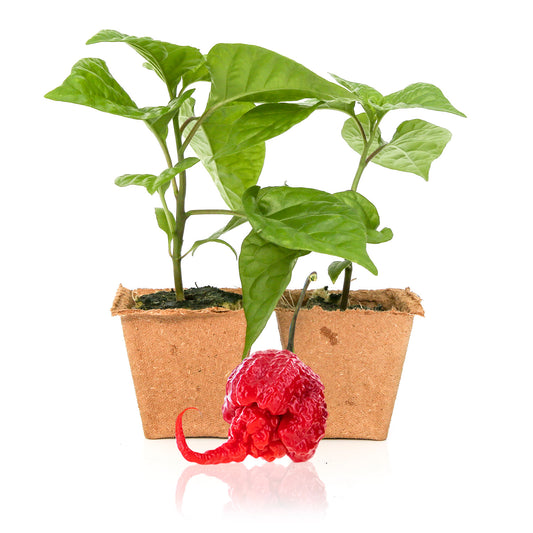 Sold Out For Season
Sold Out For SeasonCarolina Reaper Pepper Plants
Regular price From $ 12.99Regular priceUnit price per$ 9.99Sale price From $ 12.99Coming Soon -
Pepper Joe's Jalapeno Pepper Seeds
Regular price From $ 2.99Regular priceUnit price per -
Habanero Pepper Seeds
Regular price From $ 2.99Regular priceUnit price per -
Pepper Joe's Giant Jalapeno Pepper Seeds
Regular price From $ 5.99Regular priceUnit price per -
Chocolate Habanero Pepper Seeds
Regular price From $ 3.99Regular priceUnit price per -
Ancho Poblano Pepper Seeds
Regular price From $ 2.99Regular priceUnit price per -
Moruga Trinidad Scorpion Pepper Seeds
Regular price From $ 7.49Regular priceUnit price per -
Carolina Reaper Summer Sausage
Regular price From $ 7.99Regular priceUnit price per

